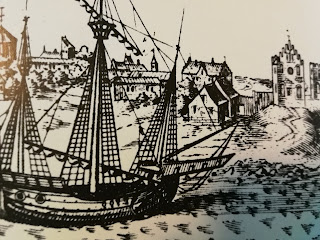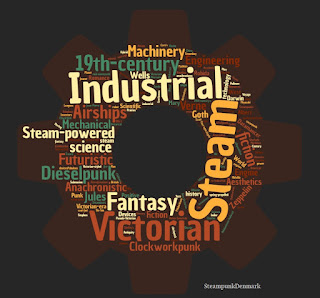Windpunk - housing the Danish way
We have no dramatic mountains, steep cliffs, not really any rivers that could generate power. No dramatic Gothic castles or fancy gargoyles.
Copenhagen 1587 (Københavns Topografiske Udvikling indtil 1300)
Brick buildings would not be elegant but more chunky. Probably build with boulders and a wooden roof, a straw roof or sometimes a tile roof.
House - 1525
Below is another house build before 1536, with a boulder foundation and brick walls. This charming house was used for storing tithe but later rebuild for private accommodation (around 1600). Around 1800 the house was taken over by the local estate and used for housing peasants (and their families, widows and paupers. Note the boulders in the foundation.
House rebuild around 1600
House rebuild around 1600
The impressive towering architecture known from other European countries is not really present in Denmark (Gothic churches of Paris - anyone?). Would be nice though!
When we look at Copenhagen in sixteenth century we see a relatively small town with a few tall buildings. A few high towering buildings in a town encircled by the city wall.
Copenhagen aprox. 1596 (Københavns Topografiske Udvikling indtil 1300)
This woodcut illustrates the old legend of Hake, king of the Geathish, and his war against Denmark and king Sigar. King Hake’s troops (to the left) masked themselves with branches of trees with leaves on. In this disguise they advanced towards Sigar’s castle. In his castle king Sigar is playing backgammon. Here we see lots of towers and nice details on the (brick) building.
Olaus Magnus "Historia de Gentibus Septentrionalibus" (History of the Nordic Peoples).
The woodcut below depicts a battle. Notice the cannons to the bottom left and what looks like dead stick people in the upper half. More cannons at the top left corner and people behind a palisade.
Copenhagen 1599 (but is supposed to depict a battle at sea anno 1535 -36) (Københavns Topografiske Udvikling indtil 1300)
Olaus Magnus "Historia de Gentibus Septentrionalibus" (History of the Nordic Peoples), published in Rome 1555.
I wish I had access to a lot of nice woodcuts depicting all kinds of interesting things, but my budget only allows me to find them in new books and on the internet. Hope you enjoyed this collection...
Inspiration:
Medeltida kyrkoarkitektur i Norden (1964) Svanberg, Jan, R&S/ J.W.CappelensForlag.
Københavns Topografiske Udvikling indtil 1300 (1999) Aarbøger for Nordisk Oldkyndighed og Historie 1998. Det Kongelige Nordiske Oldskriftselskab.
Olaus Magnus "Historia de Gentibus Septentrionalibus" (History of the Nordic Peoples) (1555), Rome. http://www.avrosys.nu/prints/prints28-olausmagnus.htm










Comments
Post a Comment